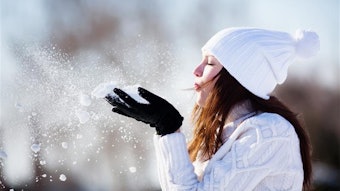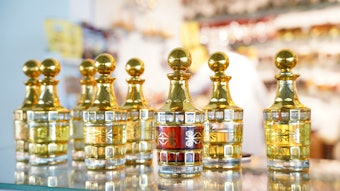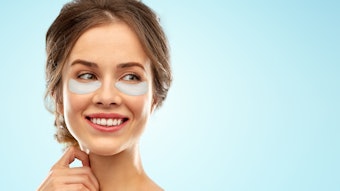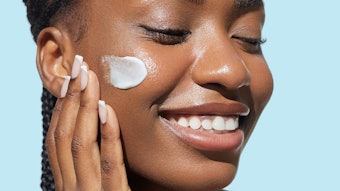
Read the full article in the November/December 2020 digital edition. . .
The cosmetics sector is becoming increasingly aware of the importance of offering consumers a complete sensory experience, satisfying their expectations and requests as much as possible, and delivering on explicit product promises. In fact, within the past few decades, the industry has more and more extensively entered the world of sensory analysis.
The essential first step to gaining effective commercial sensory feedback is understanding what consumers perceive and feel during the use of a product. In fact, drawing up the required sensory profile for a cosmetic formula will allow the formulator to not only satisfy the consumer need, but also introduce a product to the market with the well-grounded potential for success.1
All cosmetic products, including makeup, hair and skin care, primarily owe their successes to the satisfactory sensory and emotional effects they arouse in consumers.2 The consumer’s initial choice to purchase is not conditioned by the intrinsic properties of the formulation alone, but by its perceived quality—meaning the ability of the product to raise a series of more or less intense and pleasant sensations, which are influenced by personal and collective conditioning.
If we to consider only the formula and exclude the sensory impact of the packaging, the initial sensorial sequence of steps taken by the consumer include: a first glance at the product’s surface after opening the container; an initial smelling of the headspace notes from the container; cautiously touching the product mass; and finally, taking up of a portion of the product from the container.
This first sequence is followed by a series of handling steps related to the skin application phase. These include sensing how a product spreads over the skin surface, its ease of massaging, and the sensory feedback received from the body and fingers during rubbing. This can be called the rubbing and direct devaluation phase.
Finally, the late check evaluation phase arrives, including a series of gentle touching, pressing and frictional movements of the fingers over surfaces of the body treated with the product.
A thorough sensory analysis of cosmetic products may also include trivial industry issues, considering, for example:
- Which amount of perfume gives the best performance at lower costs?
- How can we determine if the first industrial run provides the same perceived characteristics as the laboratory sample?
- Would it be possible to substitute a raw material in a successful product without changing the perceived product characteristics?
- How could we formulate a product as sensorially similar as possible to the main competitor in our market?
- Which controls are most suitable during product stability evaluations?
Sensory Analysis
Sensory analysis is an objective modern technique used to identify, describe and quantify the impact of a product or sensory performance as experienced by the five senses. This investigation is the subject of complex science, born around 60 years ago in the foods industry and successively developed in all industrial and scientific fields where perception elements play a key role.
Our whole lives, we perform sensory analyses. We touch, smell, look, listen and taste. Our senses are essential for the control of our surrounding environment, preserving life quality and improving our social behavior. Providing the characteristics of true scientific measurements, i.e., reproducibility and repeatability, in comparison with historical values, statistical significance and reliability, to sensory perception is the task of sensory analysis. Its applications in the development of a successful cosmetic product are various but so far, few industries have used this tool in a systematic way.
There are three main types of sensory evaluations: expert evaluation, consumer evaluation and trained panel evaluation. The first is, of course, the most practical. An expert formulator identifies the sensory profile of a product and compares it mentally to his/her experience in the specific field. The method is quick and simple, and is frequently used to screen among several formulations that differ for a small group of variables.
Indeed, it is not an objective tool, as the influence of the expert’s culture and technical skill on such an evaluation is very high. Moreover, the evaluation results cannot be expressed with numbers and could be influenced by elements such as an abstract picture of consumers’ needs in the mind of the formulator.
Product Profiling
When creating the product sensory profile, it is most crucial for the formulator to identify the product’s perceivable characteristics. Color, transparency or opacity; pearled or shiny appearance; ease of flow inside the bottle and outside of the container; noise when the bottle is shaken; perfume intensity; and characteristic notes are the first steps for successful product development. All these elements may be extracted by market analysis, consumer interviews, comparison with the main competitors or motivational research.
Required perceptions bound to label efficacy claims, packaging characteristics, technological or ingredient innovation, etc., should be clearly but briefly described as well from the very beginning of communications between product managers and formulators.
Product Formulating
To begin the ingredient selection, first recall that to formulate means to investigate in order to establish:
- A group of well-identified ingredients
- In defined ratios that
- Obtain a prefixed set of functionalities.
Successive steps involve finding the most suitable formulation strategy that will respond better to the described sensory requirements. To make things more complex, all the functional, safety and stability sides of the ingredient’s assembly should be taken into account at the same time. One key point, for instance, is the identification of the structural properties of ingredients that could influence the product rheology. This impacts the consumer’s senses and is implied in the different product phases: viscosity at different rubbing rates, water evaporation and absorption equilibrium; limiting layer on the skin; lubricity and spreadability of the oil phase—just to mention a few examples.
The ingredient selection must be made by taking into account the properties of each substance plus the mutual changes due to blending in the formula and to equilibrium interactions among components—indeed, all things that are not easy to forecast.
Emulsifiers, Polymers and Emulsion Stability
One step, even though it is not necessarily the first one, is selecting the right vehicle for the active principles. Of course, an emulsion gives more possibilities to adjust for sensorial characteristics than does a single-phase system. Indeed, with an o/w emulsion, the reduction of massage time can easily be achieved by increasing the amount of non-polymeric emulsifiers, ethoxylated or polyglycolic, so the penetration of the oil phase is faster.
On the contrary, the use of polymeric emulsifiers, e.g., acrylates, gives the possibility to obtain a light and fresh feel but the pick-up of the formula is not suitable for a jar. If we prefer to have a product with longer spreading characteristics, the right starting point might be a w/o emulsion. The evaporation of the inner phase, water, makes the system more fluid during application, improving the ease of massage. Note that the excessive use of amphiphilic molecules such as emulsifiers, solubilizers or surfactants could develop a sticky after-feel on the skin.
The stability of the emulsion is crucial. One important factor for satisfactory behavior is the thickener in the external phase. In the case of o/w emulsions, the selection is relatively easy.
. . .Read more in the November/December 2020 digital edition. . .
References
- Morten, M., Civille, G.V. and Carr, B.T. (2006) Sensory Evaluation Techniques 4. Boca Raton: CRC Press.
- Poudret, J., Marull, S., Courturaud, V., Pense-Lheritier, A.M. and Cosson, N. (2014) Characterization of lipsticks by sensory and texture analysis: Relationships with makeup benefits. IFSCC.











